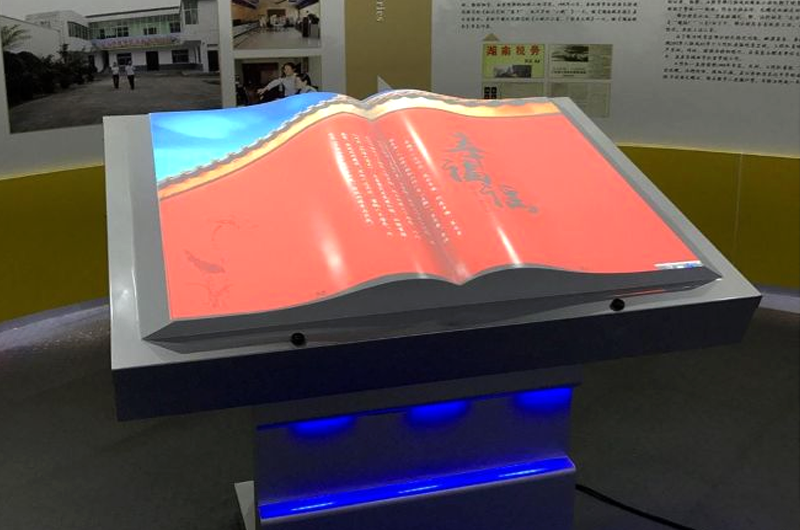1、 The core principle of electronic book flipping
Electronic flipping of books utilizes motion capture technology (such as infrared sensing, camera recognition, radar sensing, etc.) to capture the audience's hand movements. When the audience makes a hand gesture similar to "flipping the book" in front of the screen (such as waving from left to right or right to left), the system will recognize and trigger the animation effect of page flipping, and simulate the real flipping experience with sound effects.
The content displayed on the screen is usually a page of a "virtual book", which can be customized according to the theme of the exhibition hall, such as historical documents, exhibit introductions, popular science knowledge, etc. It supports high-definition images, text, embedded videos or 3D models, which are more rich and vivid than traditional paper materials.
2、 Common forms of electronic book flipping
Projection electronic flipping book
- One of the most common forms is to project the image of a virtual book onto a physical "bookshelf" (usually a tabletop shaped like opening a book) through a projector, and the audience can wave their hand in front of the tabletop to trigger page flipping.
- Advantages: Relatively low cost, flexible installation, suitable for creating a mysterious feeling of "flipping through books from afar".
Touch electronic flipping book
- Based on touch screens (such as large-sized infrared touch screens and capacitive screens), viewers can directly slide or click on the screen to flip pages or interact, providing a more realistic touch book experience.
- Advantages: More precise response, support for multi touch (such as zooming in and out of images, clicking to view details), suitable for scenarios that require high interaction accuracy.
Holographic flipping book
- By combining holographic projection technology, the images of virtual books are suspended in the air, and the audience can use gestures to flip pages through the air, creating a more technological and immersive visual effect.
- Advantages: Strong visual impact, suitable for high-end exhibition halls or creative displays, but high cost and certain requirements for environmental lighting.
3、 Advantages of application in exhibition halls
- Enhance interactivity: Break the traditional passive viewing mode of static display, allow the audience to actively participate, and deepen their memory of the content.
- Space and cost savings: An electronic flip book can store massive amounts of information, replacing a large number of paper display boards or books, and the content can be updated at any time through the backend without the need to remake physical materials.
- Enhance the sense of technology and fun: Innovative interactive forms can attract the attention of audiences (especially children and young people), making the exhibition experience more vivid and interesting.
4、 Typical application scenarios
- Museums: Display ancient books, details of historical events, stories behind cultural relics, and more.
- Science Museum: Science popularization principles, technological development history, etc.
- Enterprise Exhibition Hall: Introduce the company's history, product information, brand story, etc.
- Cultural and tourism venues: showcasing local culture, folk customs, travel guides, etc.
Electronic book flipping, with its intuitive interaction and rich content carrying capacity, has become an important technical means for modern exhibition halls to enhance their display effects.




